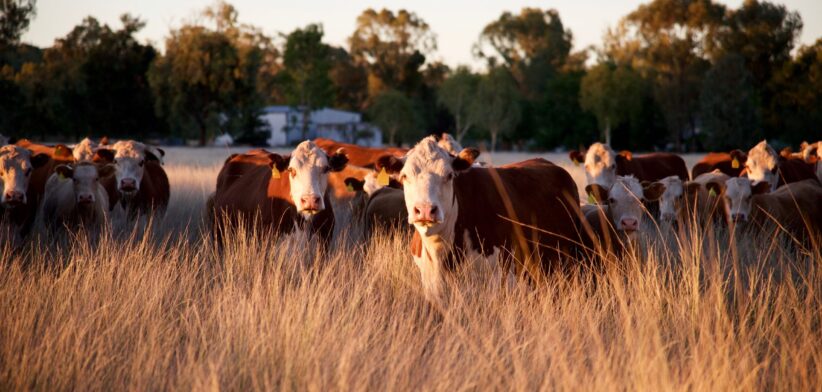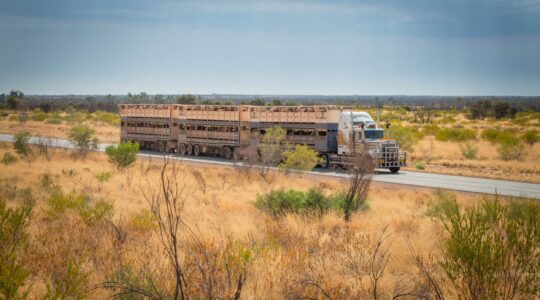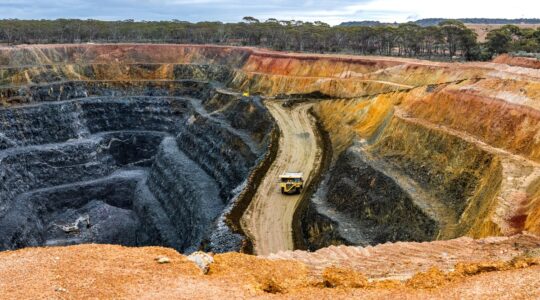Australian primary producers are optimistic about the short-term outlook, despite increased volatility in overseas markets.
Bendigo Bank’s 2025 Mid-Year Australian Agriculture Outlook report found the two major themes driving the outlook across the sector over the coming six months were challenging seasonal conditions and the volatile geopolitical environment that had changed significantly over the past six months.
Bendigo Bank Industry Affairs Senior Manager Neil Burgess said overall, however, the outlook for Australian agriculture was “cautiously optimistic”, with the potential for improved seasonal conditions, combined with rising consumer demand and lower interest rates.
“With around two thirds of Australian agricultural products exported, increasingly volatile global markets will be key to growth prospects across Australia’s agribusiness sector, underscoring the importance of maintaining strong diversified trade relationships,” Mr Burgess said.
He said heightened uncertainty within the global trade environment remained a headwind for producers, processors and exporters alike, however, more favourable trade terms and strong demand was expected to provide ongoing price support.
“Growing uncertainty in the global trade environment, driven by tariff announcements from the US and China is leading to increased volatility in markets.
“The largest impacts of the trade conflict and the sweeping US tariffs on Australian agriculture at this stage are generally expected to be through downstream effects, rather than directly from the 10 percent tariff imposed by the US on Australia.”
Mr Burgess said the recent apparent de-escalation in trade tensions between the US and China was easing concerns slightly, but with any sustained agreement appearing a long way off, there may be an improved chance of a trade deal being struck between Australia and the EU.
He said an export bright spot was expected to be beef, with demand set to remain firm as the US reduction in supply continued to favour Australian producers.
“The cattle industry is set for a big second half of 2025 with current strong export demand likely to be sustained and prices also likely to remain strong – trending marginally higher in the back half of the year.”
Mid-Year Australian Agriculture Outlook for Queensland:
- Output across most major fruit varieties should continue to see above average yields including citrus, avocados and bananas. Quality prescriptive retail demand has become increasingly common as improved output allows supermarkets to pick and choose between produce. This is also seeing a higher number of seconds hit wholesale markets.
- Vegetable supply from Queensland and northern New South Wales will lift through July. This follows a cold start to winter which slowed crop development and limited availability.
- The key production region of Bundaberg is seeing decent macadamia yields with a large number of trees in the region now five years old. However, some producers further south have seen a significant impact from inclement weather events earlier in the year. Macadamia export prices through the first half of 2025 have remained well above the 2024 season. Prices are expected to remain higher year-on-year on the back of strong demand from China.
- Grain growers in Queensland are generally well positioned at the mid-point of 2025, with winter wheat production tipped to reach around 2.1 million tonnes. This is relatively in line with the five-year average, but down 9 per cent year-on-year. Ample stocks and a strong production outlook for the coming season is likely to see prices trade at a discount to the southern markets.
- Queensland’s cattle industry is forecast to see a favourable second half of 2025. Rising export demand is expected to keep prices strong throughout the back half of the year. The recent rainfall has also boosted optimism around the state. The most recent three-month outlook from the Bureau of Meteorology has indicated an above average chance of median rainfall for the majority of the state. However, a key watch will be if seasonal conditions continue to be favourable. Producers may prefer to keep stock on farm rather than sell and capitalise on the pasture available. Beef production is expected to remain mostly stable as the high volumes of cattle at local markets and international demand for Australian beef encourages processors to continuously purchase stock.
- Queensland’s dairy industry has been resilient to the challenges presented in 2024/25. New season outlooks are looking to lift relative to 2024/25 as wet conditions across the state have had impacts on animal health, pasture growth and feed quality. While this forced some producers from the industry, others used the opportunity to reinvest in infrastructure contributing to its projected production, however supply is hindered by lower Queensland herd numbers.








